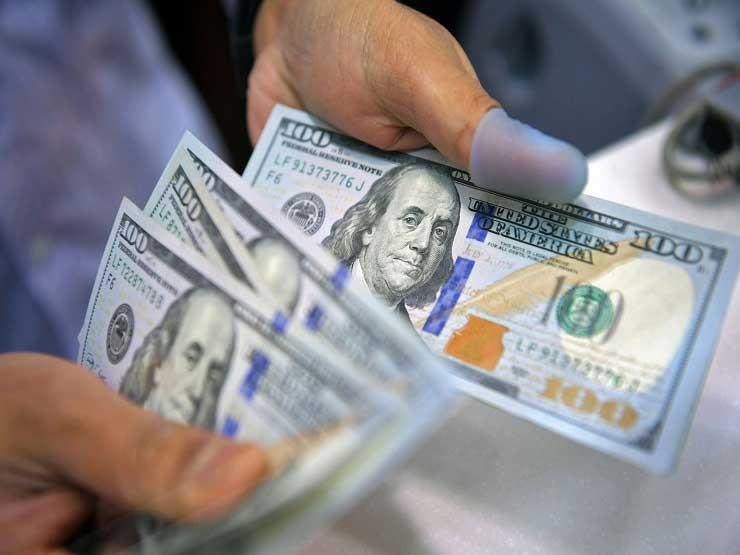Global Currencies Rally As Dollar Dips
Recent months have witnessed a notable decline in the value of the US Dollar globally as key economic data emerges, stirring the currency markets.
Published May 17, 2024 - 00:05am

Image recovered from alweeam.com.sa
The US Dollar has experienced a significant decline against major global currencies, reaching its lowest level in several months. This downward trend comes on the heels of new data indicating a slowdown in inflation rates within the United States, bolstering expectations that the Federal Reserve may cut interest rates. On the trading floor, the Dollar Index plummeted by 0.75% yesterday, marking its steepest percentage loss since the start of the current year.
The Japanese Yen continued its recovery for the second consecutive day, recording a noticeable rise against the dollar to 153.6 Yen per dollar. This improvement is attributed to the narrowing yield gap between US and Japanese government bonds. Meanwhile, the Australian Dollar climbed by more than 1% to reach a peak not seen in four months at 0.6714 USD. However, its gains were partially reversed following a surprising uptick in Australia's unemployment rates.
In Europe, the Euro enjoyed a significant climb, surpassing the 1.09 USD mark for the first time in over two months. Similarly, the New Zealand Dollar and the British Pound Sterling both soared to their highest levels in two months at 0.6140 USD and 1.27 USD, respectively. The Chinese Yuan also saw a modest increase, with the exchange rate moving to 7.2070 Yuan per dollar.
Fresh economic data showed that core inflation in the US slowed down in April to an annual rate of 3.6%, in line with market expectations. Although this rate remains considerably higher than the Federal Reserve's target of 2%, the decline from the 3.8% level recorded the previous month paves the way for a potential interest rate cut as early as September, particularly amid the lead-up to the US presidential elections scheduled for November.
The weakening of the US Dollar has sparked widespread implications for global trade, commodities pricing, and financial markets as investors reassess currency risks. As the Dollar Index, which gauges the currency against a basket of six major rivals, tumbled to a new low, businesses with international operations may find exporting goods cheaper, whilst the cost of importing goods into the US could rise. This dynamic could have distinct impacts on various sectors of the US economy, potentially benefitting exporters but harming import-dependent businesses and consumers who might face higher prices for goods.
A closer analysis reveals that consumer price inflation has been tepid due to various factors, including lower demand for certain goods and services in a post-pandemic world. In contrast, the inflation slowdown is a reflection of moderating costs across a swath of consumer expenses, from used cars to healthcare. The Federal Reserve's response to these changing inflation patterns is to closely monitor the economic indicators and adjust monetary policy accordingly to meet its dual mandate of maximising employment and stabilising prices.
The currency movements also reflect the changes in commodity prices. As the US Dollar depreciates, commodities priced in dollars like oil and gold, become cheaper in terms of other currencies, which can drive up demand and, by extension, the prices of these commodities. This influence can lead to a ripple effect on economies that are commodities-driven, boosting export revenues on one hand, but also potentially fueling inflation on the other if the price increases are passed onto consumers.
Market analysts highlight that currency fluctuations are normal and often predictable responses to shifts in economic policies and indicators. However, they also caution that prolonged periods of volatility can lead to market uncertainty and impact foreign investment flows. The volatility seen in the US Dollar comes amidst a backdrop of broader global economic concerns, such as the ongoing tensions between the US and the major trading partners, the fluctuating oil prices due to geopolitical tensions in the Middle East, and the evolving economic landscape in the post-Brexit European Union.
The upcoming US presidential elections add an additional layer of complexity to the Federal Reserve's decision-making process as the central bank seeks to navigate the fraught political landscape. Historically, election years have been periods of increased market sensitivity, with investors carefully scrutinizing policy pronouncements for potential impacts on the economy and financial markets. The Federal Reserve, while politically independent, must still consider the wider implications of its policies on the economy as voters head to the polls.
As the global community watches the US Dollar and interpretations of these economic trends continue to evolve, it becomes clear that multiple factors are contributing to the current state of affairs. From the US Federal Reserve's interest rate policies to geopolitical tensions, global commodity flows, and the impending presidential elections, each aspect plays a role in shaping the USD's trajectory. For now, market participants may remain focused on the incoming economic data and central bank communications for clearer signals on the future of not just the US Dollar, but also the broader financial landscape.






